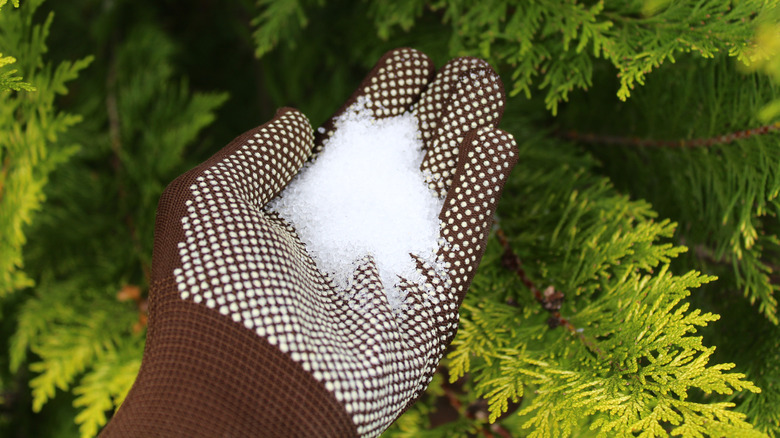Find Out About the Certain Plants That Are Detrimentally Influenced by Epsom Salt Application
Epsom salt, a prominent home treatment for numerous gardening issues, is commonly applauded for its useful effects on plant development. Comprehending the particular plants that can be detrimentally affected by Epsom salt is essential for any garden enthusiast looking to enhance their plant care regimen.
Roses

Roses, especially sensitive to changes in their environment, can be adversely affected by the application of Epsom salt. While Epsom salt is typically used as a fertilizer to advertise plant growth and enhance blooming, roses are just one of the plants that do not react well to its application. The high magnesium content in Epsom salt can disrupt the uptake of various other important nutrients by the rose plants, resulting in deficiencies that manifest as yellowing leaves or stunted development.

Tomatoes
While Epsom salt is usually touted as a solution for different plant concerns, consisting of blossom end rot in tomatoes, its application can lead to damaging results if not utilized judiciously. Extreme Epsom salt, which is magnesium sulfate, can interfere with the delicate nutrient equilibrium needed by tomatoes, potentially leading to shortages in other important nutrients like calcium. When considering the usage of Epsom salt on tomatoes, it is essential to adhere to suggested application prices and soil screening to avoid unplanned repercussions on the total health and wellness and efficiency of these beloved garden plants.
Peppers
Peppers, prized for their numerous colors and levels of spiciness, can demonstrate susceptibility to adverse influences from Epsom salt when not applied with treatment and factor to consider for their details dietary requirements. what plants don't like epsom salt. Peppers, belonging to the Solanaceae family members, require a delicate balance of nutrients to thrive. While Epsom salt is known to boost magnesium degrees in plants, excessive application can interrupt this balance, causing unfavorable results on pepper plants
When peppers are exposed to high levels of magnesium from Epsom salt, it can hinder the plant's capacity to soak up various other crucial nutrients like calcium and potassium. This inequality might manifest in symptoms such as fallen leave discoloration, stunted growth, and decreased fruit manufacturing. In addition, the excessive magnesium can change the dirt pH, go to my blog additional worsening nutrient uptake concerns for peppers.

Rhododendrons
Offered the sensitivity of particular plant species to inequalities brought on by Epsom salt, it is important to take into consideration the effect on Rhododendrons, which also require details nutrient degrees to grow. Rhododendrons are acid-loving plants that favor acidic soil conditions with a pH range between 4.5 and 6.0. Epsom salt, chemically called magnesium sulfate, can alter the soil pH and interrupt the delicate equilibrium of nutrients important for Rhododendron health.

To maintain the optimal development and wellness of Rhododendrons, it is important to prevent the indiscriminate use of Epsom salt and instead focus on supplying the details acidic soil problems and nutrients that these plants need for prospering.
Azaleas
Azaleas, known for their lively flowers and wide series of colors, are ornamental shrubs click for info that come from the Rhododendron genus. These preferred blooming plants are often discovered in gardens, parks, and landscapes due to their elegance and adaptability. Azaleas are sensitive to modifications in soil pH levels, which can dramatically affect their development and total health and wellness. While Epsom salt is frequently made use of as a treatment for magnesium shortage in plants, its application to azaleas can have unfavorable impacts.
Azaleas favor a little acidic soil problems, and an unwanted of magnesium from Epsom salt can interrupt this equilibrium, leading to nutrient inequalities and possible poisoning concerns. The inaccurate application of Epsom salt can result in stunted development, yellowing of leaves, and total decrease in the wellness of azaleas.
Verdict
Finally, it is essential to be familiar with the particular plants that can be negatively influenced by the application of Epsom salt. Roses, tomatoes, azaleas, peppers, and rhododendrons are some examples of plants that might not gain from Epsom salt and could also endure damage. It is crucial to research study and recognize the needs of each plant types prior to making use of Epsom salt as a fertilizer to ensure their health and wellness.
Recognizing the specific plants that can be negatively impacted by Epsom salt is critical for any gardener looking to enhance their plant care routine. While Epsom salt is frequently made use of as a fertilizer to promote plant growth and improve flowering, roses are one of the plants that do not react well to its application.Excessive use of Epsom salt can likewise result in an accumulation of salts in the dirt, leading to root damages and dehydration of the rose plants. While Epsom salt is recognized to boost magnesium degrees in plants, extreme application can interrupt this equilibrium, leading to negative results on pepper plants.
The high salt content in Epsom salt can also dehydrate Rhododendron roots, causing additional stress and anxiety and damages to the plant. (what plants don't like epsom salt)
Comments on “What Plants Don't Like Epsom Salt and Just How It Influences Development”